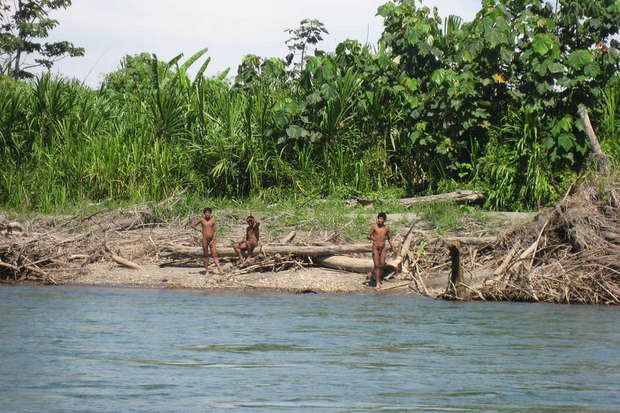Isolated Amazon Tribes Monitored with Space-Age Technology

The vast jungles of the Amazon rainforest harbor tribes mostly isolated from the outside world, whose way of life, largely unchanged for millennia, is now increasingly threatened by intrusions from modern civilization.
Now, scientists reveal they can monitor these "uncontacted tribes" using satellites, which would allow safe, inexpensive and noninvasive tracking of these tribes in order to protect them from outside threats.
The Amazon is the largest and most diverse rainforest in the world— about 10 percent of all known species on Earth dwell there. The long-term survival of the estimated 50 to 100 isolated tribeswho live in the region is under increasing threat of disease and violence as the tribes encounter the rest of the world. [Gallery: Images of Uncontacted Tribes]
In order to help conserve these uncontacted Indians, researchers need accurate estimates of their populations. One way to collect this data involves flying over their villages, but such overflights are both expensive and invasive, and could instill fear among these indigenous peoples. Another strategy involves encountering individuals on the ground, but among other risks, scientists could accidentally spread disease to members of the tribes.
Instead, scientists investigated whether satellite imaging could monitor uncontacted tribes. "Since college some 15 years ago, I've always been fascinated by these isolated tribes," said lead study author Robert Walker, an anthropologist at the University of Missouri at Columbia. "I've always wanted to study them in a safe way, and remote sensing offers that."
The investigators focused on indigenous groups concentrated near the headwaters of the Envira River, located at the border of Brazil and Peru. These include the Mashco-Piro, nomadic hunter-gatherers who live in Peru's densely forested Madre de Dios region, and a number of Pano-speaking farming societies.
The researchers combed through satellite images to look at five isolated villages previously identified via overflights by Brazilian officials. They confirmed these locations and measured the sizes of their villages, houses and gardens. The villages ranged from a small one of about 50 people to a large and growing village of about 300 people.
Sign up for the Live Science daily newsletter now
Get the world’s most fascinating discoveries delivered straight to your inbox.
"We can find isolated villages with remote sensing and study them over time," Walker told Live Science. "We can ask: Are they growing? Do they move?"
Surprisingly, based on the sizes of the houses and villages, the scientists find the population densities of these isolated villages is about 10 times greater, on average, than other villages of indigenous Brazilian peoples. This may be due to the fact that they have to live closer together because they are not as good at clearing the forest, since they lack steel machetes and axes as well as modern devices like chainsaws and tractors, the researchers said. The tribes may also be afraid of spreading out due to fear of being attacked by outsiders, Walker said.
The researchers now plan to focus on 29 more isolated villages to "look at their ecology — that is, elevation, distance from rivers and roads — and use this to model where else we can find more isolated villages," Walker said.
The scientists detailed their findings online today (Nov. 5) in the journal Royal Society Open Science.
Follow us @livescience, Facebook & Google+. Original article on Live Science.












